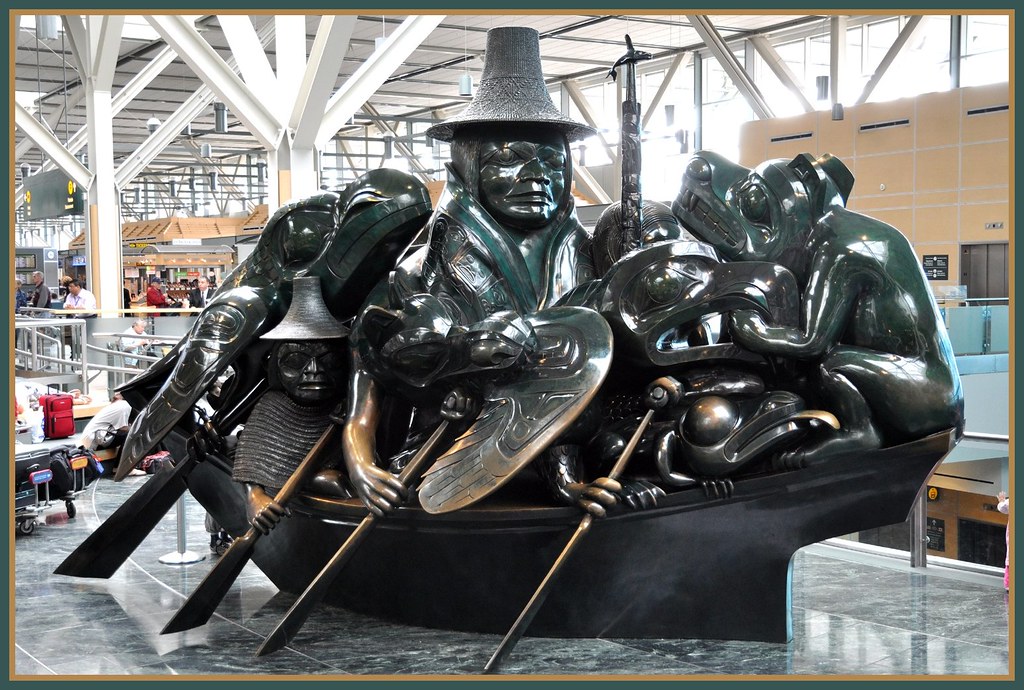3.5. Theoretical Perspectives on Culture
Music, fashion, technology, norms, and values — all are products of culture. How do sociologists interpret them within the context of the social organization of life? Chapter 3. Culture ends with a review of the analysis of culture in three theoretical paradigms in sociology: functionalism, symbolic interactionism, and critical sociology.
Structural Functionalism
Functionalists view society as a system in which all parts work — or function — together to create society as a whole. In this way, societies need culture to exist. Cultural norms function to support the fluid operation of society, and cultural values guide people in making choices. Talcott Parsons (1902-1979) referred to the function of culture as “latent pattern maintenance,” meaning that the cultural practices that reproduce and circulate symbolic meanings and codes serve the function of maintaining social patterns of behaviour and facilitating orderly change. Culture ensures that people continue to understand one another, share common values and norms, and find security in stable definitions of the “meaning of life.” If cultural systems fail to perform their function within society, people succumb to anomie or normlessness, and life threatens to become meaningless or incomprehensible.
By focusing on the function that culture plays in maintaining the stable equilibrium of society as a whole, functionalists also provide interesting insights into cultural activities that might seem irrational or bizarre on the surface. Bronislaw Malinowski (1884-1942) described the way that the Trobriand Islanders of New Guinea used magic at each stage of preparation for fishing (1925). From a rationalized, calculative point of view, magic ritual has nothing to do with the ability to catch fish. Fishing is a practical activity. However, as Malinowski pointed out, fishing for the Trobriand Islanders was also a risky and uncertain activity. It was dangerous, weather was unpredictable and the whereabouts of fish variable. Magic provided the fishermen with a sense of control over their environment and a sense of confidence that enabled them to venture out into the dangerous waters day after day. Whether the magic rituals “worked” or not, they performed an important and rational function in the economic life of the Islanders. It provided a stable pattern of meaning that empowered the fishermen to risk their lives to bring back an essential food resource.
Functionalists argue that cultural practices play a similar role in modern societies. The game of hockey, for example, in which highly-skilled men and women chase a disk of rubber around a frozen sheet of ice, risking injury and expending energy for nonproductive purposes, could be regarded an irrational and crazy activity. Yet millions of people watch hockey, millions of dollars are spent on it, millions of people’s identities are defined by their fandom, and millions of people’s collective sense of self-worth can hang on the fortunes and failures of their favourite hockey teams. Hockey is both, practically speaking, useless and yet clearly a highly valued activity. Why? As Durkheim argued with respect to religious rituals and totems, when people come together and focus their attention on a common object — in this case, the fortunes of a disk of rubber on a sheet of ice — thoughts and feelings pass back and forth between them until they take on a supra-individual force, detached from the individuals themselves. A pre-rational collective consciousness emerges that provides the basis for group solidarity or a moral sense of group togetherness. Hockey functions as a site of collective convergence in a society that otherwise threatens to dissolve into incoherence as people’s everyday lives diverge in pursuit of individual self-interests.
In addition, many people point to the latent functions of hockey, in that playing hockey provides an outlet for energies that might otherwise be directed to negative activities. It provides the basis for the cultivation of the self in the pursuit of excellence, it provides important lessons on the value of team play and it provides an exercise activity that contributes to the health of the population. As many Canadians know, it is often easier to get a good physical workout when you are chasing a puck or a hockey ball than it is to convince themselves to go jogging in the cold or to do another repetition down at the gym.

Symbolic Interactionism
Symbolic interactionism is a sociological paradigm that is most concerned with the face-to-face interactions between members of society. Interactionists see culture as being created and maintained by the ways people interact, interpret each other’s actions and create common meanings. Proponents of this paradigm conceptualize culture as the product of a continuous chain of interactions in which meaning is given to both objects in the environment and the attributes and actions of others. This is where the term “symbolic” comes into play. Every object and action has a symbolic meaning. Language, as a repository of symbolic meanings, serves as a means for people to represent and communicate their meanings, motives and understandings to others. Symbolic interactionists perceive culture as highly dynamic and fluid because it is dependent on how meaning is created and recreated over and over again through the personal face to face encounters that constitute social life.
A symbolic interactionist approach to fashion, for example, would emphasize that fashion is a language or code that people use to interpret who others are and communicate who they themselves are. It also involves determining what the present moment in time is. People distinguish between what is “old-fashioned” and what is “hip” with an acute sensibility of what it means to “be with the times.” Clothing fashions in particular represent an extremely intricate language of interpersonal communication, as anyone who has gone shopping for clothes with a picky friend is well aware. What variables are involved in the question, “Does this look good on me?” Clothes are never simply “functional,” because even the most functional and practical Mountain Equipment Co-op style clothing makes a statement about the wearer. Georg Simmel (1858-1918) noted that, while extremely transitory, the establishment of fashions always has to contend with two seemingly contradictory tendencies — the desire of individuals to fit in and conform to what is current and fashionable, and the desire of individuals to stand out as unique individuals (1904). Being fashionable involves a highly nuanced negotiation between these two poles.
Critical Sociology

Critical sociologists view social structure as inherently unequal and based on power differentials related to issues like class, gender, race, and age. For a critical sociologist, culture is not a unified tradition that is experienced the same way by all people in a society. As discussed earlier in the chapter, female genital mutilation practiced by several social groups in Africa and Asia is a cultural practice that is rooted in gender inequality. It is a “tradition” but it is also an example of a cultural practice that reinforces and perpetuates gender inequalities and differences in power. Unlike the functionalists, who examine culture in terms of its function in social cohesion, or symbolic interactionists, who emphasize how people come to mutual understandings through cultural practices and interactions, critical sociologists examine how inequalities and power relationships are maintained by a culture’s value system.
Some norms, formal and informal, are practiced at the expense of others. Following Confederation in 1867, women (of European ancestry) were not allowed to vote in federal elections in Canada until 1919, and it was not until 1940 that they could vote in provincial elections in Quebec. (Women property owners had been able to vote prior to Confederation.) It was not until 1948 that Canadians of Japanese, Chinese, and South Asian origins were permitted to vote. Inuit Canadians had their right to vote revoked in 1934 and returned in 1950. Indigenous Canadians, who had been able to vote in some regions up until 1898, had their rights revoked and were not permitted to vote federally again until 1960. In each case of discrimination, it was the dominant culture’s attitudes toward the subordinate groups that served as the rationale for refusing them the franchise. For example, in 1898 the Member of Parliament for Saint John argued that “Indians [sic] knew no more of politics ‘than a child two years old’” (Elections Canada, 2014). Because of prevailing paternalistic and racist attitudes, it was argued that Indigenous people would somehow be more susceptible to manipulation by politicians than other Canadians.
Culture as a Source of Innovation and Constraint

Culture in general is a site of two opposing tendencies: One is the way that cultures around the world lay down sets of rules or norms which constrain, restrict, habitualize, and fix forms of life; the other is the way that cultures produce endlessly innovative and diverse solutions to common human conditions, like birth and death, or the need for nutrition and shelter. Cultures both constrain and continually go beyond constraints.
This chapter began by asking, “what is culture?” Culture comprises all the beliefs, values, norms and ways of life of a society. It is the totality of a group’s material and non-material products. Because culture is learned, it includes how people think and express themselves. While people may like to consider themselves unique individuals, they must acknowledge the impact of shared culture; they inherit thought and language that shapes their perceptions and patterns their behaviour, including their relations to family and friends, and faith and politics. In this sense, culture defines the normative patterns that constrain people to live according to the given rules. On the other hand, the incredible variety of ways of thinking, ways of being, and ways of orienting oneself on the Earth, which Wade Davis (2002) calls the ethnosphere, attests to the endlessly innovative responses to the human condition that culture affords. Human possibilities are not determined by history, society or biology. Culture reflects the imaginative capacity of human beings to go beyond what is given.
To an extent, culture is a artiface that humans create to survive and adapt. As Thomas Berger (1969) puts it, “Its fundamental purpose is to provide the firm structures for human life that are lacking biologically.” In the absence of biological programming, humans have culture. Sharing a similar culture with others is precisely what defines societies and societal identities. Nations and societies would not exist if people did not coexist culturally. There could be no societies if people did not share heritage and language, and civilization would cease to function if people did not agree to similar values and systems of social control. Culture is preserved through transmission from one generation to the next, but it also evolves through processes of innovation, discovery, and cultural diffusion. People may be restricted by the confines of their own culture, but also have the ability to question values and make conscious decisions. Because each iteration of culture “must be continuously produced and reproduced… [i]ts structures are, therefore, inherently precarious and predestined to change” (Berger, 1969). No better evidence of this change exists than the amount of cultural diversity within Canadian society and around the world. How people manage cultural diversity in the global context of this era, as a source of mutual understanding and innovation, or as a source of troubling difference and threat, will determine their response to culture’s inherent precariety and mutability.
Media Attributions
- Figure 3.37 The Spirit of Haida Gwaii sculpture by Bill Reid, photo by Caribb, via Flickr, is used under a CC BY-NC-ND 2.0 licence.
- Figure 3.38 Canadian nurses voting 1917 William Rider-Rider / Canada. Dept. of National Defence / Library and Archives Canada / PA-002279/, via Wikimedia Commons, is in the public domain.
- Figure 3.39 In passing by Beth Rankin, via Flickr, is used under a CC BY 2.0 licence.

